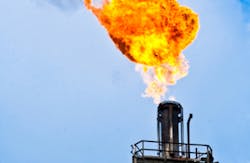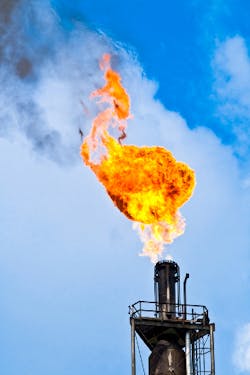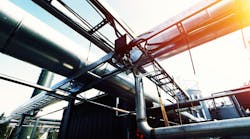Thermal flowmeters evolved from several different lines of research and development. One such line involves the use of hot-wire anemometers for velocity profile and turbulence research purposes by TSI in the late 1960s. John Olin, Ph.D., and Jerry Kurz, Ph.D., worked for TSI and wanted to develop a more rugged device that could be used in industrial applications. Dr. Olin and Dr. Kurz moved from Minnesota to Monterey, Calif., and formed their own company, Sierra Instruments (www.sierrainstruments.com), where they developed more rugged devices that became the first thermal-dispersion flowmeters.
A second line of research involved Fluid Components International (FCI, www.fluidcomponents.com). FCI initially developed thermal flow switches to detect flow/no-flow situations in oil transmission lines. These devices remained switches for a number of years. Then, in 1981, FCI engineers added flowmeter capability to them, and the second line of thermal flowmeters was born. Both Sierra and FCI remain among the leading suppliers of thermal-dispersion flowmeters today.
Thermal flowmeters work by introducing heat into the flowstream and measuring how much heat dissipates, using one or more temperature sensors. There are two different methods for doing this. One method is called the constant temperature differential. Thermal flowmeters that use this method have two temperature sensors. One is a heated sensor and the other sensor measures the temperature of the gas. Mass flowrate is calculated based on how much electrical power is required to maintain a constant temperature difference between the two temperature sensors.
The second method is called a constant current method. Under this method, thermal flowmeters also have two sensors—one heated sensor and one that measures the temperature of the flowstream. Power to the heated sensor is kept constant, and mass flow is measured based on the difference between the temperature of the heated sensor and the temperature of the flowstream. Both methods make use of the principle that higher velocity flows result in greater cooling. Both compute mass flow by measuring the effects of cooling on the flowstream.
Thermal flowmeters have benefited greatly over the years from governmental requirements to monitor flare, stack gas, and greenhouse gas emissions. In the early 1990s, the need for continuous emissions monitoring (CEM) required measurement of sulfur dioxide (SO2) and nitrous oxide (NO2). This measurement was made by combining a measurement of the concentration of SO2 and NO2 with a measurement of flowrate. At that time, thermal flowmeters competed with multipoint averaging Pitot tubes and ultrasonic flowmeters to make this measurement.
The broad acceptance of global warming as a cause of climate change has presented a second opportunity for thermal flowmeters. Since the election of the Obama administration in 2008, the U.S. government has made the identification and reduction of greenhouse gases a major priority. The administration has stated as a goal to reduce greenhouse gases by 80 percent by 2050. Many other countries have also made greenhouse gas reduction a priority. The Kyoto Accord has resulted in the creation of several mechanisms for the international measurement of greenhouse gases.
Some of the environmental applications for thermal include the following:
- Measuring and monitoring of flare gas flow
- Flue gas monitoring
- Methane recovery from coal mines
- Biomass gasification
- Measurement of emissions from steam generators and boilers
- Distillation and refining of ethanol
- Measurement and recovery of landfill gases
Accuracy is another important frontier for thermal flowmeters. Until recently, 1 percent represented a high point for accuracy of thermal flowmeters, and most had accuracies considerably less than this. According to Sierra Instruments, their QuadraTherm has accuracy of 0.5 percent of reading when measuring above 50 percent of full-scale flow. Achieving accuracies of better than 1 percent is important for thermal meters, since it could potentially open up a new set of applications, such as custody-transfer measurement. But for now, thermal flowmeters do not have approvals for custody-transfer applications from the American Gas Association (www.aga.org) or from other similar approval agencies.
For more information on Flow Research’s work in the area of thermal flow measurement, visit FlowThermal.com.



